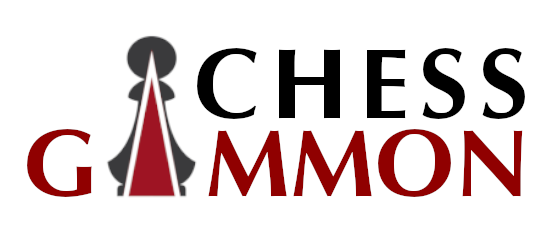- Introduction to the Marshall Attack
- History of the Marshall Attack
- Key Concepts in the Marshall Attack
- Notable Games Using the Marshall Attack
- Benefits and Drawbacks of the Marshall Attack
- How to Counter the Marshall Attack
- Conclusion
Introduction to the Marshall Attack
Picture this – you’re deep into a game of chess, carefully planning each move to outwit your opponent. Suddenly, they unleash a surprise attack known as the Marshall Attack. What do you do now? Don’t panic! Let’s dive into the world of the Marshall Attack and explore its intricacies together. feel free to also take a look at 40 Famous Chess Moves to Learn.
The Marshall Attack is a bold and aggressive chess opening that arises from the Ruy Lopez, one of the oldest and most respected openings in chess. Named after the American chess legend Frank Marshall, this attack is characterized by Black sacrificing a pawn to achieve active piece play and counterplan against White’s central pawn majority.
You might be wondering, why would anyone willingly give up a pawn in a game where every piece counts? The answer lies in the dynamic and imbalanced positions that the Marshall Attack creates. By sacrificing material early on, Black aims to disrupt White’s plans and seize the initiative, leading to sharp and tactical struggles on the board.
This attacking strategy has captured the imagination of chess enthusiasts around the world, as it allows players to unleash creative and thrilling combinations that can catch even the most seasoned opponents off guard. The Marshall Attack is not for the faint of heart – it requires courage, calculation, and a willingness to take risks in pursuit of victory.
Whether you’re a novice looking to spice up your games or an experienced player seeking new challenges, the Marshall Attack offers a wealth of tactical possibilities to explore. By mastering this
History of the Marshall Attack
Let’s delve into the intriguing history of the Marshall Attack, a bold and exciting chess opening that has stood the test of time. Named after Frank James Marshall, an American chess master, this gambit was first introduced in the early 20th century and has since become a favorite among aggressive players looking to shake up the game.
Marshall was known for his daring and creative playing style, and his eponymous opening reflects this bold approach to the game. The Marshall Attack is a variation of the Ruy Lopez, one of the oldest and most respected openings in chess. By sacrificing a pawn early on, Black can quickly mobilize their pieces and mount a fierce attack against White’s king. This dynamic play can catch your opponent off guard and lead to exciting tactical struggles on the board.
The Marshall Attack gained widespread recognition in the mid-20th century when it was rediscovered and popularized by the legendary Cuban world champion, Jose Raul Capablanca. Since then, it has been a staple in the repertoire of many top grandmasters, including the likes of Garry Kasparov and Fabiano Caruana.
What makes the Marshall Attack so fascinating is its rich history of memorable games and strategic battles between chess titans. From epic showdowns in world championship matches to nail-biting encounters in elite tournaments, the Marshall
Key Concepts in the Marshall Attack
So, you’ve heard about the Marshall Attack and you’re intrigued. But what exactly are the key concepts behind this popular chess opening strategy? Let’s dive in and explore the essential elements that make the Marshall Attack such a powerful weapon in a player’s arsenal.
1. **Pawn Sacrifice**: One of the defining features of the Marshall Attack is the sacrificial pawn move that sets the stage for an aggressive counterattack. By sacrificing a pawn early on in the game, the player gains dynamic compensation in the form of active piece play and potential threats against the opponent’s king.
2. **Activity Over Material**: In the Marshall Attack, players prioritize activity and initiative over material gain. By sacrificing a pawn to open up lines for their pieces and create attacking chances, players aim to seize the initiative and put pressure on their opponent from the get-go.
3. **Piece Coordination**: Central to the success of the Marshall Attack is the harmonious coordination of the player’s pieces. By developing pieces efficiently and coordinating them effectively, players can create powerful threats and control key squares on the board.
4. **King Safety**: While the Marshall Attack is known for its aggressive and dynamic play, it is essential for players to prioritize king safety. By ensuring that the king is secure and well-defended, players can launch their attacks with confidence and capitalize on their attacking chances without risking their own king’s safety.
5. **Pawn Structure**:
Notable Games Using the Marshall Attack
So, you’ve decided to explore the world of chess openings and stumbled upon the Marshall Attack. This bold and dynamic opening has been played by some of the greatest chess players in history, leading to some thrilling and memorable games. Let’s take a closer look at some notable games where the Marshall Attack was unleashed.
**1. Kasparov vs. Kramnik (1996)**
In this legendary game, Garry Kasparov, a true chess genius, faced off against Vladimir Kramnik, another chess grandmaster. Kasparov employed the Marshall Attack against Kramnik’s Ruy Lopez, leading to a fierce battle on the board. The game showcased the power and complexity of the Marshall Attack, with both players displaying incredible skill and strategic prowess.
**2. Fischer vs. Petrosian (1971)**
In this classic game, the legendary Bobby Fischer took on Tigran Petrosian in a fierce battle of wits. Fischer, known for his aggressive playing style, unleashed the Marshall Attack against Petrosian’s steady defense. The game was a showcase of tactical brilliance and sheer determination, with both players showcasing their skills in a thrilling encounter.
**3. Anand vs. Carlsen (2013)**
In a modern showdown between two chess titans, Viswanathan Anand faced off against Magnus Carlsen in a highly anticipated encounter. Anand, a former
Benefits and Drawbacks of the Marshall Attack
So you’ve heard about the Marshall Attack and you’re curious about whether it’s worth adding to your chess repertoire. Well, let’s break it down and look at the benefits and drawbacks of this intriguing opening strategy.
**Benefits:**
1. **Dynamic Play:** The Marshall Attack is known for creating dynamic and sharp positions on the board. This can lead to exciting and complex gameplay, which can be a thrilling experience for both players.
2. **Surprise Factor:** One of the benefits of the Marshall Attack is its element of surprise. Many players may not be familiar with this opening, giving you an advantage as you navigate through the early stages of the game.
3. **Strong Counterattack:** The Marshall Attack allows Black to counterattack aggressively, putting pressure on White’s position and creating opportunities for a strong attack.
4. **Drawing Chances:** In many variations of the Marshall Attack, Black has good chances to secure a draw, even against stronger opponents. This can be a valuable tool in tournament play when facing a tough adversary.
**Drawbacks:**
1. **Sacrifice of Material:** One of the key drawbacks of the Marshall Attack is the sacrifice of a pawn in the opening stage. This can be a risky move, as it gives White an early advantage in material.
2. **Book Knowledge:** The Marshall Attack is a highly theoretical opening, requiring a deep understanding of the complex variations
How to Counter the Marshall Attack?
So, you’ve found yourself facing the formidable Marshall Attack in a game of chess. Don’t panic! While this opening can be tricky to navigate, with some strategic play and a clear understanding of how to counter it, you can confidently navigate your way to victory.
Here are a few tips on how to effectively counter the Marshall Attack:
- **Control the Center**: One key strategy in countering the Marshall Attack is to maintain control of the center of the board. By controlling the central squares with your pawns and pieces, you limit your opponent’s ability to launch a successful attack.
- **Develop Your Pieces**: It’s essential to develop your pieces quickly and efficiently in the early stages of the game. By getting your pieces out into active positions, you can create threats of your own and put pressure on your opponent’s position.
- **Avoid Simplification**: The Marshall Attack is known for its sharp and complex nature. Avoid simplifying the position too quickly, as this can play into your opponent’s hands. Instead, look for ways to maintain the tension and keep the position unbalanced.
- **Be Patient**: Patience is key when facing the Marshall Attack. Remember, your opponent may have sacrificed material to launch their attack, so taking your time and carefully evaluating each move can pay off in the long run.
- **Exchange Pieces Carefully**:
Conclusion
So there you have it – the ins and outs of the intriguing Marshall Attack in chess. Whether you’re a beginner looking to add a new weapon to your arsenal or a seasoned player seeking to understand this classic opening even further, the Marshall Attack offers a dynamic and exciting path to explore in your game.
As we’ve seen, the Marshall Attack is a double-edged sword. It can lead to sharp tactics and aggressive play, providing opportunities for both Black and White to showcase their strategic prowess on the board. However, like any opening, it also comes with its drawbacks and risks. Players must be well-prepared and understand the nuances of this line to navigate the complexities it presents.
When facing the Marshall Attack as White, it’s crucial to remain calm and stick to your game plan. Don’t be intimidated by your opponent’s aggressive intentions – instead, focus on developing your pieces efficiently and seizing control of the center. By maintaining a solid position and avoiding falling into tactical traps, you can neutralize Black’s attacking chances and steer the game in your favor.
On the other hand, if you’re a fan of the Marshall Attack as Black, remember to stay flexible and adaptable in your approach. While the opening offers dynamic counterplay and chances for a quick initiative, it’s important not to overextend or commit too heavily to an all-out assault. Keep your strategic





